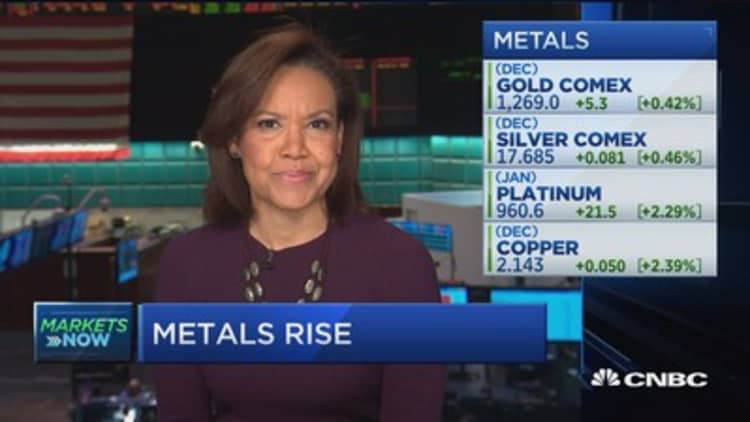Oil prices fell 1 percent on Tuesday, with U.S. crude breaking below $50 per barrel for a second straight day ahead of weekly data that could show a build in domestic inventories.
Analysts said verbal jockeying among the Organization of the Petroleum Exporting Countries (OPEC) created uncertainty about potential output cuts at its meeting next month, noting that a particular worry was Iraq's exclusion from the plan.
International Brent crude oil futures fell 89 cents, or 1.7 percent, to $50.57 per barrel by 2:40 p.m. ET (1840 GMT).
U.S. West Texas Intermediate (WTI) crude futures settled down 56 cents, or 1.1 percent, to $49.96 a barrel.

Trade group American Petroleum Institute will issue at 4:30 4:30 p.m. EDT (2030 GMT) a weekly report of crude stockpiles and other oil supply-demand data, ahead of an official report by the U.S. government's Energy Information Administration on Wednesday.
Analysts polled by Reuters expected the data would show crude stocks rose 800,000 barrels last week, after a drop of more than 5 million barrels in the week to Oct. 14. Commodity-watchers said a leak in a pipeline leading out of the huge Cushing, Oklahoma, storage hub should lead to more build up of stocks in the coming weeks.
"The sentiment is it's a bit more negative," said Scott Shelton, energy futures broker with ICAP in Durham, North Carolina. "There are some expectations that we can see a crude build."
Official inventory data has surprised by showing drawdowns in six of the seven past weeks, including the largest fall in stocks since 1999 when analysts foresaw a build. U.S. crude stocks are closely watched to gauge supply and demand in the world's biggest crude consumer.
The dollar rose to its highest level in nearly nine months against a basket of currencies, making greenback-denominated commodities, including crude, less affordable to holders of the euro and other currencies. The S&P 50 index for U.S. equity prices, a proxy for business confidence, fell 0.4 percent, the most in a week.
"The dollar moving higher historically is obviously a negative factor," said Kyle Cooper, analyst at ION Energy in Houston.
Before this week, oil prices had risen nearly 13 percent in three previous weeks since OPEC announced its first planned output cut in eight years to shore up crude prices that have more than halved from 2014 highs above $100 a barrel.

OPEC hopes to remove about 700,000 bpd from an estimated global supply of 1 to 1.5 million bpd. Details of how much each member should cut have been left to the cartel's meeting in Vienna on Nov. 30.
Iraq emerging as a possible dissenter and non-member Russia as a potentially compliant collaborator ahead of the gathering of OPEC's 14 member states,
Iraq, the second-largest producer in OPEC, said on Sunday it wanted to be exempt from output curbs as it needed more money to fight Islamic State militants.
Until there is more clarity on the planned cuts, which OPEC hopes will be coordinated with non-members such as Russia, analysts said oil prices would likely remain range-bound but volatile around current levels.
"Expect more of this choppy interplay until more concrete news emerges, as speculative buying runs into record producer selling of the futures contracts for hedging," Jeffrey Halley, senior market analyst at brokerage OANDA in Singapore, said.

